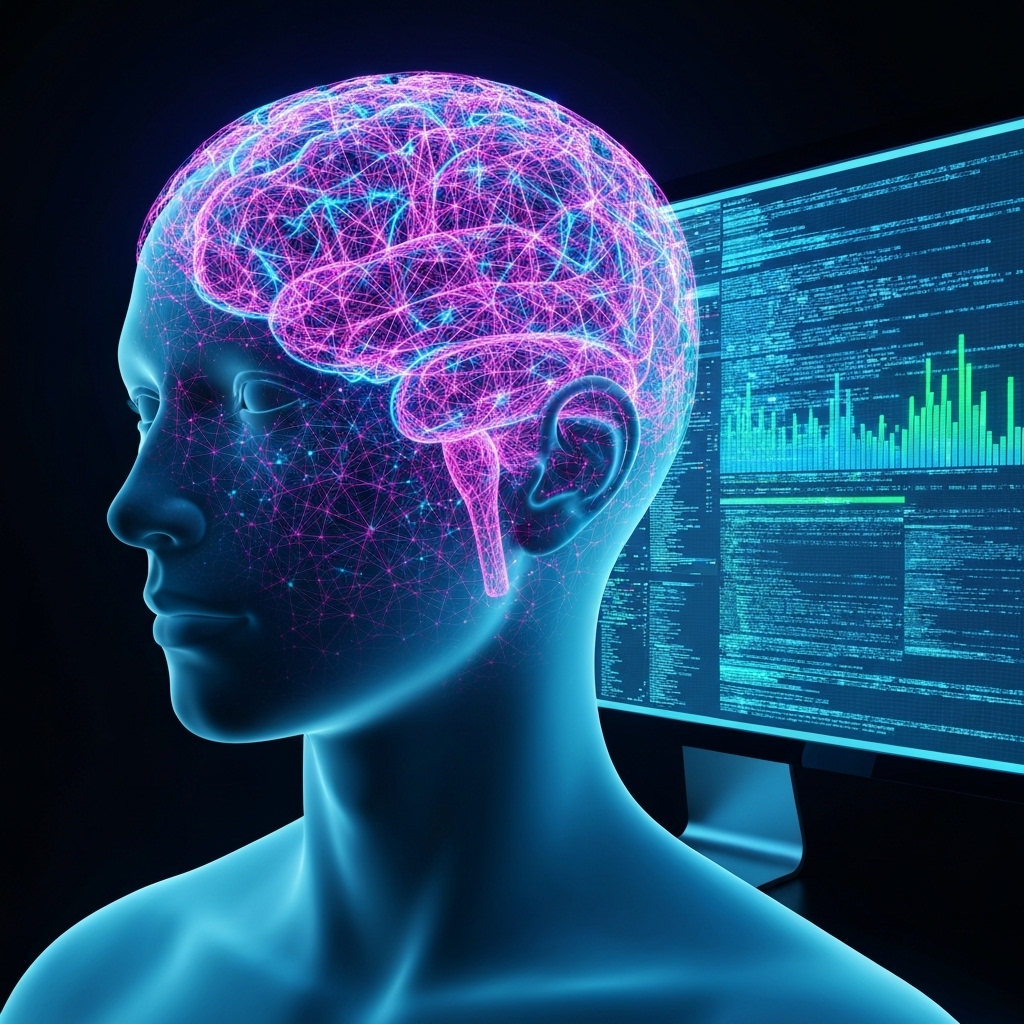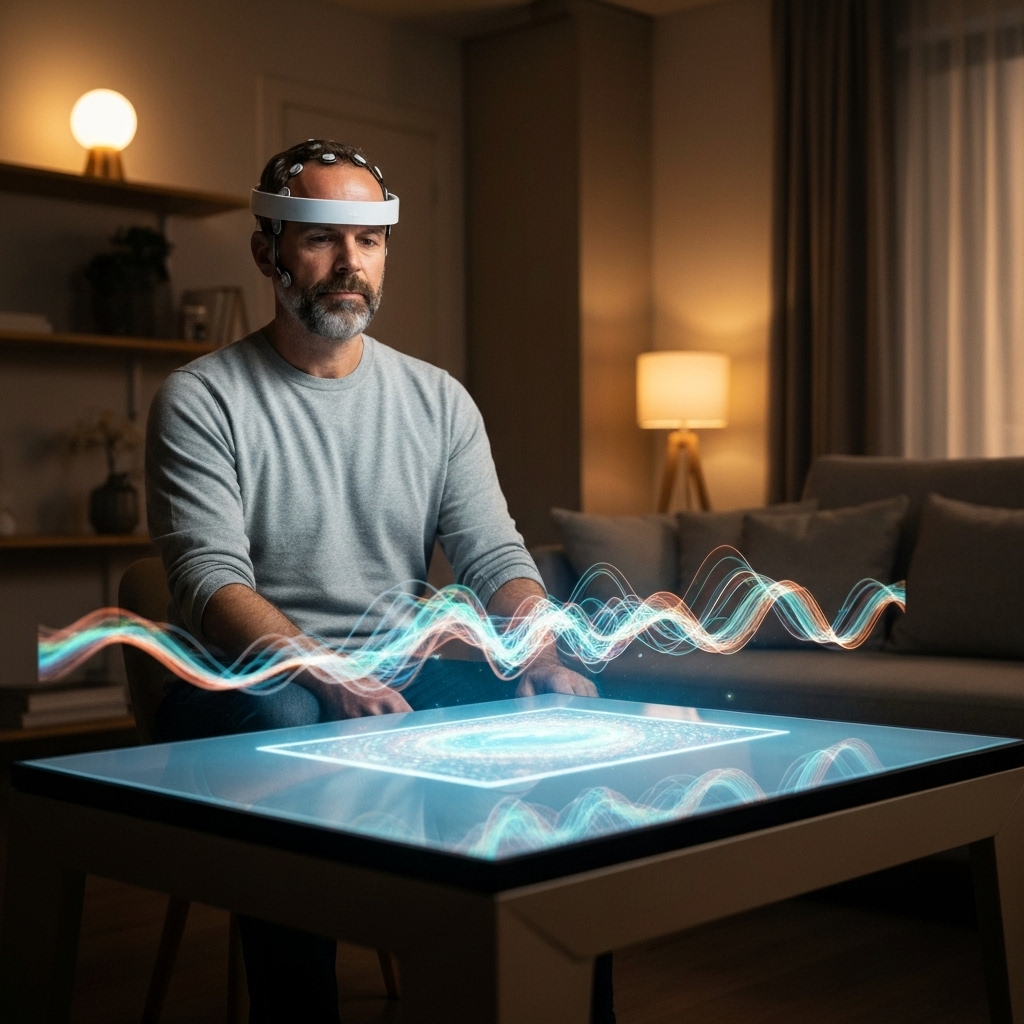Neural interface devices are making it possible for the human brain to communicate directly with computers and machines, transforming how we interact with technology. By detecting and interpreting brain signals, these systems can translate thoughts into actions—such as moving a robotic limb or typing on a screen—without physical movement. This breakthrough is particularly life-changing for individuals with paralysis or neurodegenerative diseases, offering renewed independence. Organizations like the Neuralink team and research groups at institutions such as Stanford University are pushing the boundaries of what’s possible, developing increasingly sophisticated implants and non-invasive wearables.
One of the most promising applications of neural interfaces is in medical rehabilitation. For example, patients with spinal cord injuries have used brain-computer interfaces (BCIs) to control prosthetic limbs or regain limited motor function through targeted nerve stimulation. Clinical trials have demonstrated that some users can perform complex tasks like grasping objects or navigating computer interfaces using only their thoughts. The U.S. Food and Drug Administration (FDA) has granted breakthrough device designation to several neural technologies, accelerating their path to wider clinical use. More information about ongoing research and regulatory progress can be found through the FDA’s Medical Devices portal.
Beyond healthcare, neural interfaces are beginning to influence consumer technology and entertainment. Companies are exploring thought-controlled gaming, hands-free communication, and even mood-monitoring apps that respond to neural feedback. While still in early stages, these applications hint at a future where our digital interactions are more intuitive and seamless. However, challenges remain—especially around data privacy, long-term safety, and ethical concerns about cognitive enhancement. As the field evolves, experts emphasize the need for responsible innovation, ensuring these powerful tools benefit society equitably.
As neural interface technology advances, collaboration between neuroscientists, engineers, and ethicists becomes crucial. Open-source platforms like those supported by the BRAIN Initiative are helping accelerate discovery while promoting transparency and accessibility. With continued investment and thoughtful regulation, neural interfaces could soon become as commonplace as smartphones, fundamentally reshaping how we live, work, and connect with the world around us.
What Are Neural Interface Devices?
Neural interface devices, often referred to as brain-computer interfaces (BCIs), are revolutionizing how humans interact with technology by translating brain activity into digital commands. These systems work by capturing electrical signals generated by neurons, either through electrodes implanted directly in the brain or via non-invasive methods like electroencephalography (EEG) that measure activity from the scalp. By decoding these neural patterns, BCIs can enable individuals to control computers, robotic arms, or even communicate without physical movement—offering transformative potential for people with paralysis or neurodegenerative conditions. Research in this field has advanced significantly, with institutions like the National Institutes of Health (NIH) supporting breakthroughs that bridge neuroscience and engineering.
Invasive BCIs, while more complex due to the need for surgery, offer higher resolution signals because they record directly from brain tissue. Devices like those developed by Neuralink and other neurotechnology companies aim to implant tiny electrode arrays that can monitor individual neuron activity, potentially restoring fine motor control or enabling high-speed communication. On the other hand, non-invasive approaches such as EEG headsets are safer and more accessible, though they capture less detailed data due to interference from the skull and scalp. Despite their limitations, wearable EEG systems are already being used in research, gaming, and rehabilitation settings. The Nature journal frequently publishes studies highlighting advances in both types of BCIs, underscoring the balance between signal fidelity and patient safety.
One of the most promising applications of BCIs is in restoring independence to individuals with severe motor impairments. For example, patients with spinal cord injuries or conditions like ALS have used BCIs to type messages, navigate environments, or operate prosthetic limbs using only their thoughts. Clinical trials conducted at major medical centers continue to demonstrate improvements in speed, accuracy, and usability of these systems over time. As machine learning algorithms become better at interpreting complex neural data, the responsiveness of BCIs improves, making them more practical for everyday use. Organizations like the Public Library of Science (PLOS) provide open-access platforms where researchers share findings on BCI performance and real-world integration.
Despite rapid progress, challenges remain in making BCIs widely accessible and reliable over long periods. Issues such as signal degradation, immune responses to implants, and the need for frequent recalibration must be addressed before these technologies become mainstream. Additionally, ethical considerations around privacy, autonomy, and cognitive enhancement are gaining attention as BCIs move closer to consumer markets. Experts agree that interdisciplinary collaboration—between neuroscientists, engineers, clinicians, and ethicists—is essential to ensure responsible development. For ongoing updates on regulatory developments and clinical trials, resources like the ClinicalTrials.gov database offer transparent access to current research efforts worldwide.

Medical Breakthroughs and Applications
Neural interfaces are revolutionizing healthcare by offering new hope to individuals with severe motor impairments. For patients living with spinal cord injuries or conditions like amyotrophic lateral sclerosis (ALS), brain-computer interfaces (BCIs) have become a lifeline, enabling them to interact with the world in ways previously thought impossible. By translating neural activity into digital commands, these systems allow users to control wheelchairs, manipulate robotic limbs, and communicate through text—all using just their thoughts. This leap in assistive technology is not just enhancing quality of life but restoring a sense of autonomy to those who have lost it.
At the forefront of this innovation are devices like the Utah Array, a microelectrode array that can record signals from hundreds of neurons simultaneously. Its high-resolution data capture has made it a staple in clinical research, helping scientists decode movement intentions directly from brain signals. More recently, companies like Neuralink have introduced implantable chips designed for long-term use, aiming to improve signal stability and reduce surgical risks. While still in early stages, these advancements suggest a future where seamless brain-machine communication could become routine in medical treatment.
The implications extend beyond mobility and communication—researchers are exploring how neural interfaces might help restore sensory feedback or even treat neurological disorders such as epilepsy and depression. However, challenges remain, including biocompatibility, data security, and equitable access. As the technology matures, collaboration between engineers, clinicians, and ethicists will be essential. For more information on the latest developments in neuroprosthetics, visit NIH or explore ongoing trials through ClinicalTrials.gov.
Consumer Technology and Everyday Use
Consumer-grade neural interfaces are stepping out of labs and into everyday life, with companies like Emotiv and Muse leading the charge. These wearable headsets use electroencephalography (EEG) sensors to detect electrical activity in the brain, translating it into actionable data users can interact with in real time. Originally developed for research and medical diagnostics, this technology is now being repurposed for gaming, mindfulness, and cognitive performance enhancement—bringing a sci-fi-like experience to mainstream consumers.
In gaming and virtual reality, these devices allow users to control environments or characters using mental commands, such as focusing or relaxing. This adds a new layer of immersion, where your thoughts directly influence the digital world around you. Though still in early stages, developers are exploring ways to refine signal accuracy and response time, making mind-controlled gameplay more intuitive and responsive over time.
For meditation and focus training, EEG headsets provide real-time feedback on mental states, helping users identify when they’re distracted or deeply concentrated. Apps paired with devices like Muse guide breathing and mindfulness exercises, using calming audio cues when the brain enters a relaxed state. This biofeedback loop can support long-term improvements in attention and stress management, appealing to both wellness enthusiasts and productivity-focused professionals.
While the tech isn’t yet capable of reading complex thoughts, its ability to detect broad mental patterns opens doors for personalized digital experiences. As machine learning improves and hardware becomes more affordable, consumer neural interfaces may become as common as fitness trackers—offering deeper insight into how we think, feel, and interact with technology. For now, they represent an exciting bridge between mind and machine, grounded in real science and accessible to anyone curious enough to try.

Ethical and Security Challenges
As neural interface technologies advance, the ability to read and interpret brain activity brings incredible potential—but also serious ethical concerns. One of the most pressing issues is mental privacy: if a device can detect your thoughts or emotions, who owns that data, and how is it protected? Unauthorized access to neural data could lead to invasive surveillance or even manipulation, making it essential to establish strict data security protocols. Organizations like the International Neuroethics Society emphasize the need for transparency and accountability in how brain data is collected, stored, and used.
Cognitive liberty—the right to think freely without external interference—is another cornerstone of the ethical debate. As brain-computer interfaces move from medical applications to consumer use, ensuring individuals have full control over their neural information becomes critical. This includes clear, informed consent processes and the ability to opt out of data sharing at any time. Without strong regulatory frameworks, there’s a risk that corporations or governments could exploit these technologies in ways that undermine personal autonomy.
Current efforts by agencies such as the National Science Foundation and the National Institutes of Health include funding research into neuroethical guidelines alongside technological development. These initiatives aim to balance innovation with the protection of fundamental human rights. As neural interfaces become more integrated into daily life, ongoing public dialogue and inclusive policymaking will be key to shaping responsible standards.
Ultimately, safeguarding mental privacy isn’t just a technical challenge—it’s a societal imperative. Building trust in neural technologies means putting ethical considerations at the forefront, from design to deployment. By proactively addressing risks like data breaches and cognitive manipulation, we can help ensure that the future of brain-computer interaction respects both innovation and individual dignity.

Conclusion: The Future of Mind-Machine Integration
Neural interface devices are transforming the way we interact with technology, bridging the gap between the human brain and external systems. These cutting-edge tools work by detecting and interpreting neural signals, allowing individuals to control computers, prosthetics, or even communicate using thought alone. Pioneering companies like Neuralink and research institutions such as the BrainGate Consortium have demonstrated remarkable progress, enabling paralyzed patients to operate digital devices with unprecedented precision. As these technologies evolve, they promise not only to restore lost motor and sensory functions but also to open new frontiers in how humans augment their natural abilities.
Despite their potential, neural interfaces come with significant technical and ethical challenges. Ensuring long-term biocompatibility, minimizing invasive procedures, and protecting neural data privacy are critical hurdles researchers must overcome. The risk of misuse—such as unauthorized access to brain data or cognitive enhancement creating societal inequalities—demands careful regulation and public dialogue. Organizations like the NIH and IEEE are actively involved in setting ethical guidelines to ensure responsible development. Engaging diverse stakeholders, including neuroscientists, ethicists, and policymakers, will be essential in shaping a future where these technologies benefit everyone equitably.
Public understanding plays a crucial role in the acceptance and responsible deployment of neural interfaces. Misconceptions fueled by science fiction can skew perceptions, making education and transparent communication vital. Initiatives from trusted sources like Nature and Science Magazine help demystify the science behind brain-computer interfaces, offering evidence-based insights into current capabilities and limitations. As clinical trials expand and more applications gain regulatory approval, fostering informed conversations will empower individuals and communities to make thoughtful decisions about adopting this transformative technology.
Looking ahead, the integration of neural interfaces into everyday life could redefine human potential. From helping people with neurological conditions regain independence to enhancing learning and communication, the possibilities are vast. However, realizing this future requires sustained investment in research, robust ethical frameworks, and inclusive policy-making. By approaching neural interface development with both innovation and caution, society can harness its power to uplift humanity—ensuring that advancements in mind-machine connectivity serve the greater good. For ongoing updates on breakthroughs, readers can follow developments through NIH.gov and academic journals in neuroscience and biomedical engineering.
